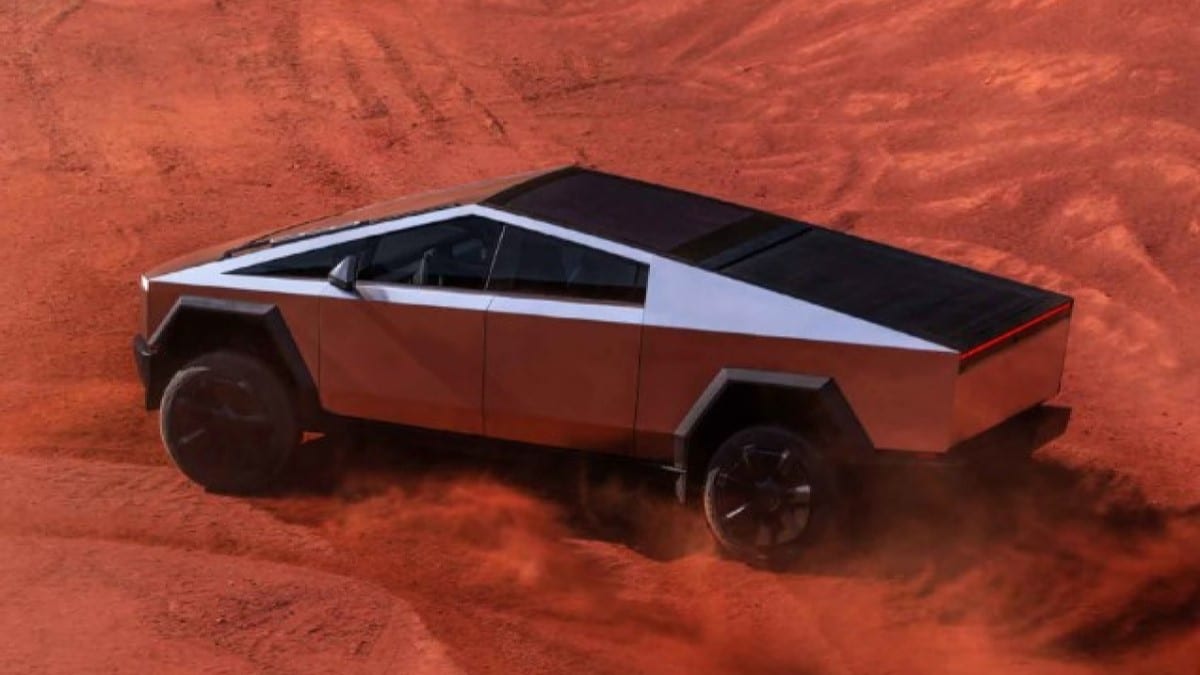It’s “a flop.” It’s “silent, swift, and sweet.”
It’s “what the future needs to be.” It has “already lost its advantage.”
It’s “alien tech or Tesla magic.” It “missed its moment.”
It’s all those things, and we haven’t scrolled past the first few tweets.
Today, Tesla delivered the first handful of Cybertruck pickups to buyers at an event in Austin, Texas, and you’d think it was a moon landing, not the appearance of a new car.
Whatever else it is, the Cybertruck is the most controversial and, yes, most interesting new car launch in years.
Tesla’s most anticipated product launch was years behind schedule and still the hottest ticket on the internet, at least for the overlapping subsets of car enthusiasts and Tesla fans, who will likely never agree on what they saw.
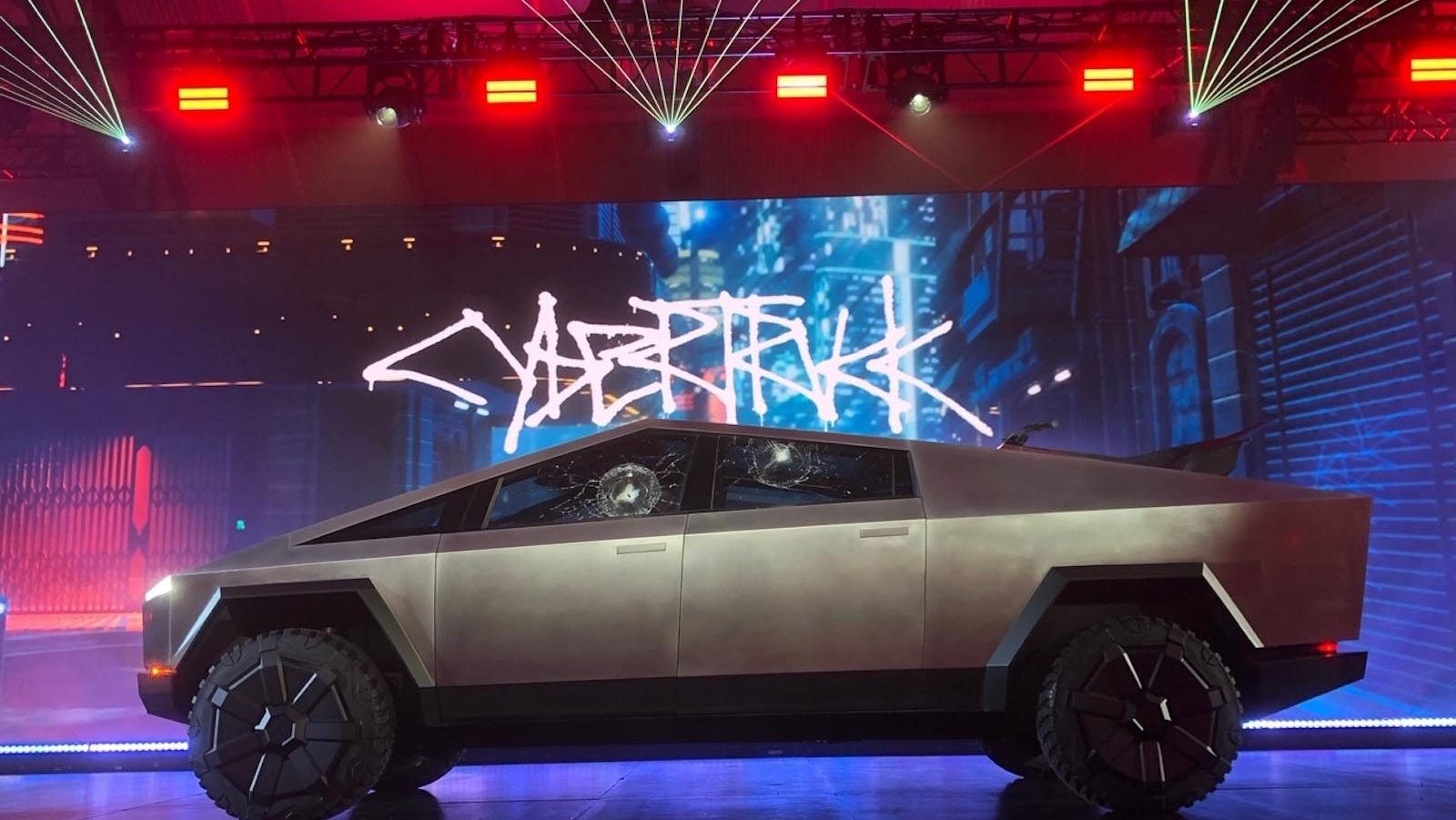
In Case You’re New Here, Some Background
A brief primer, in case you have no idea what we’re talking about:
Elon Musk, CEO of electric vehicle (EV) maker Tesla, showed off an impossibly strange pickup truck in November 2019, promising to bring it to production within two years. The Cybertruck was an angry pentagon on wheels, said to be inspired by the 1982 science fiction classic Blade Runner. All hard angles and flat stainless steel sides, it was unlike anything an automaker had ever sold.
Musk promised a starting price under $40,000, a zero-to-60 time under three seconds, 14,000 pounds of towing power, and a 3,500-pound payload capacity – an astonishing list of traits to see in one vehicle.
The truck won publicity for its decidedly brutalist design, outlandish performance claims, and the fact that presenters broke its windows on stage while Musk explained the unbreakable windows (it was quite a moment).
In the years since, the Cybertruck has remained controversial. Spy photographers regularly posted shots of the truck in development, prompting critics to point out misaligned panels and struggles in off-road testing. Tesla says It also spurred more than 2 million Americans to place a reservation for the truck. They didn’t know what it might cost but were willing to pay.
Naysayers point out that Tesla delayed production no less than six times, finally delivering more than two years late. Supporters point out that it includes new technologies, such as a stainless steel “exoskeleton,” requiring extra development time.
And it all culminated today when the first customers took delivery.
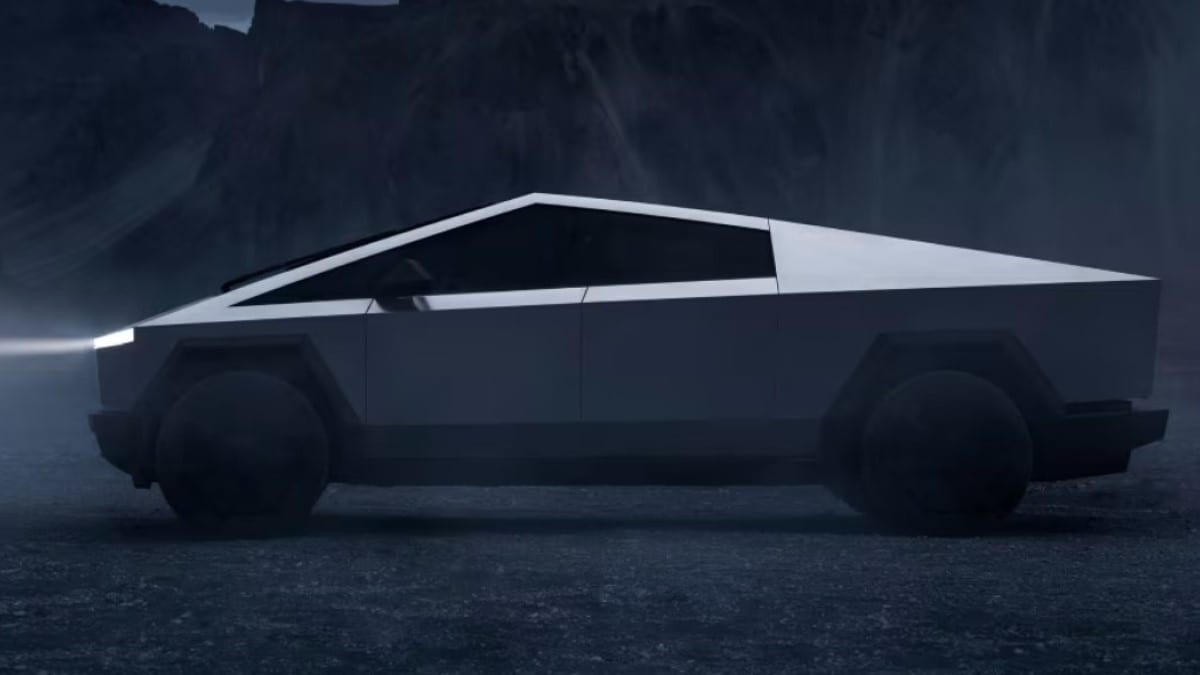
Stainless Steel, Extreme Claims
Today’s event will end none of the arguments and raise more. It was relatively light on facts and heavy on video, including claims the automotive press will spend months testing.
Standing in the back of the truck in very dark lighting, Musk explained that the truck’s body is a stainless steel alloy that “did not exist before.” It has “basically no corrosion without any paint,” he promised.
Tesla Chief Designer Franz von Holzhausen showed up to throw a baseball at the windows to prove its toughness – but he notably didn’t use the steel balls that broke the truck’s window four years ago.
Musk also claimed the truck would resist bullets from “a Tommy gun” and showed video of a series of demonstrations, including:
- Podcaster Joe Rogan failing to send an arrow through it (not the promised bullet)
- Various trucks pulling a sled through mud, claiming that the Cybertruck outpulled them all – though several of the trucks shown have higher tow ratings than the Cybertruck’s, which calls into question whether the display was accurate
- The Cybertruck out-dragging a Porsche 911 while towing a Porsche 911 – though Musk did not say which model of 911 the video used or note that many EVs are faster in a quarter mile than some gas-powered 911s
Musk promised speed-sensitive rear-wheel steering that gives the truck “a tighter turning circle than a Model S.”
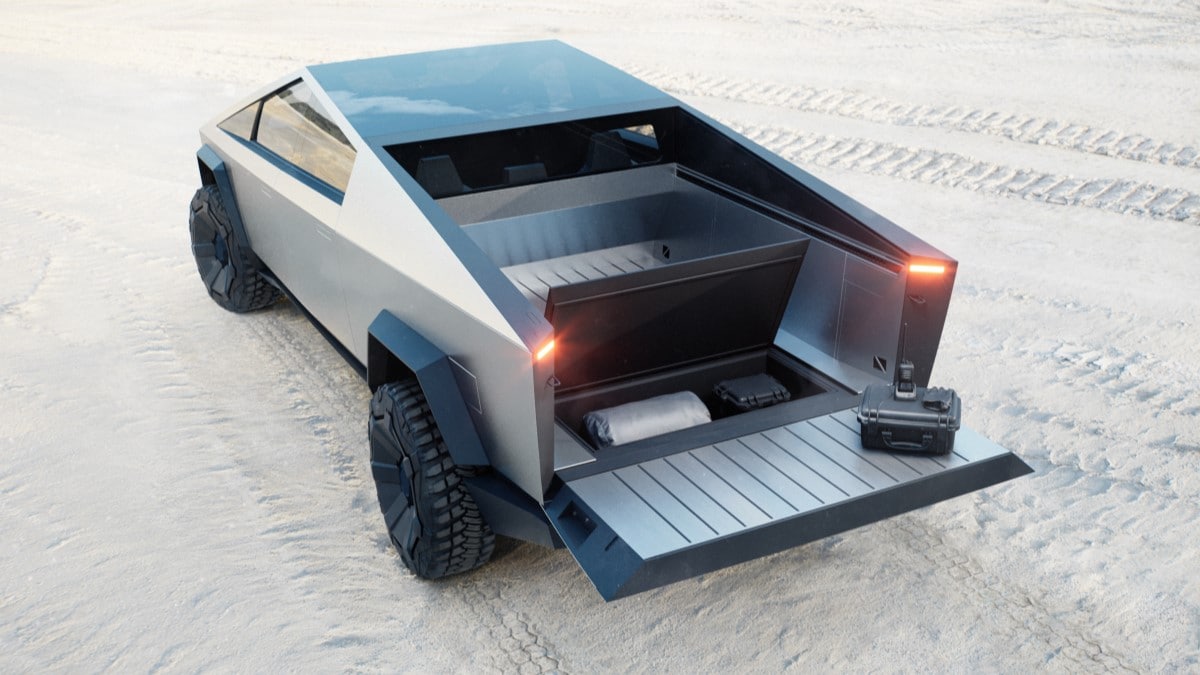
Some Specs Fall Short
In earlier advertisements, Tesla had promised a 3,500-pound payload capacity. This afternoon, the company revealed that the Cybertruck can carry 2,500 pounds. Tesla had promised 14,000 pounds of towing power. The final number fell 3,000 pounds short.
That promised sub-$40,000 price tag? The Cybertruck starts at $60,990.
At that 2019 launch event, Musk predicted a range of 500-plus miles. The finished truck can travel between 250 and 340, depending on the trim level.
Musk promised a zero-to-60 time under 2.9 seconds. Today, the company claimed that the fastest trim level, known as “Cyberbeast,” will manage the feat in 2.6 “with rollout subtracted” – a sometimes-controversial measurement that starts timing after the vehicle has already moved one foot. Other models jump to 60 in 4.1 or 6.5 seconds.
Cybertruck Pricing
| Trim Level | Tesla Estimated Range | MSRP | Delivery |
| Rear-Wheel Drive (RWD) | 250 miles | $60,990 | 2025 |
| All-Wheel Drive (AWD) | 340 miles | $79,990 | 2024 |
| Cyberbeast | 320 miles | $99.990 | 2024 |
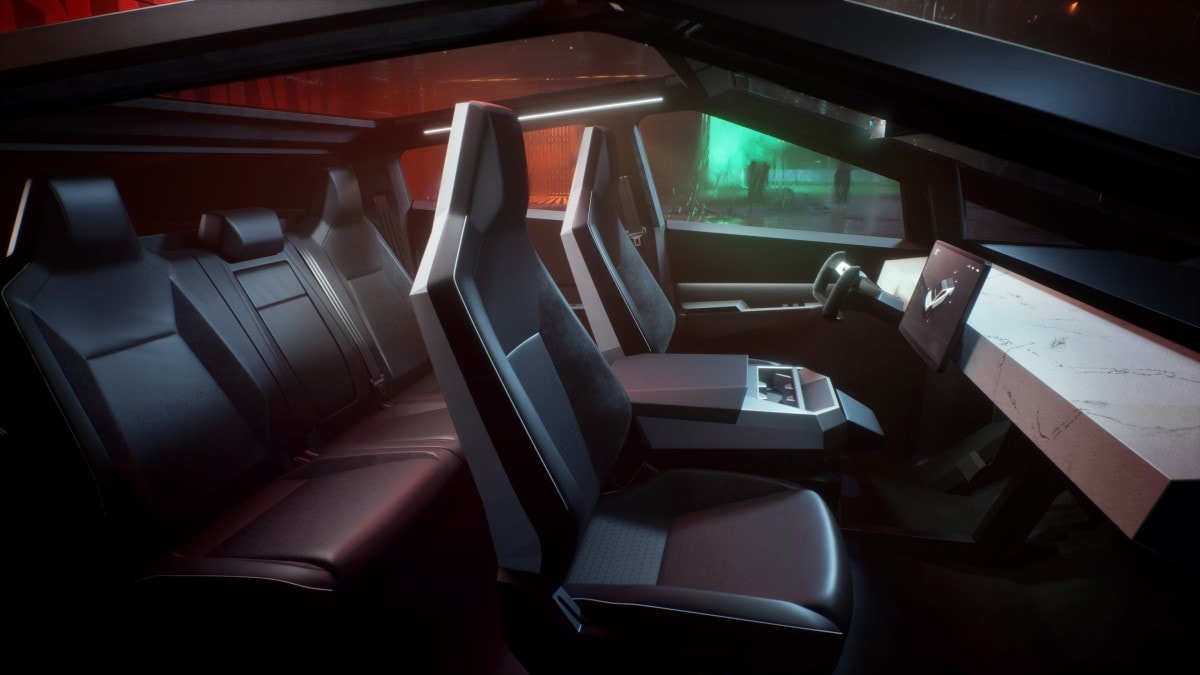
It Likely Doesn’t Matter
If Ford released a full-size truck that fell 1,000 pounds short of its promised payload capacity, the consequences would be severe. That’s probably not the case for Tesla.
The company has long enjoyed brand loyalty no other automaker can match, with an audience of followers more interested in owning something that makes them feel connected to the cutting edge of technology than something that can tow a horse trailer.
For them, the Cybertruck’s arrival is a signal moment. Over 100,000 tuned in on X (formerly known as Twitter) to see photos of it on a weekday afternoon.
It Will Likely Remain A Rare Sight
Though Tesla delivered some Cybertruck examples to buyers today, Musk has spent the last month downplaying expectations. He told investors last month that the truck is “just incredibly difficult to bring to market to reach volume.”
He called it “insanely difficult to make it at a price people can afford” and said Tesla had “dug our own grave with the Cybertruck.”
If so, it’s an incredibly high-profile grave. Kelley Blue Book visited a Tesla store two days before the launch to find fans queued up to take selfies with a Cybertruck no one could buy yet.
Dodge would kill for that kind of publicity.
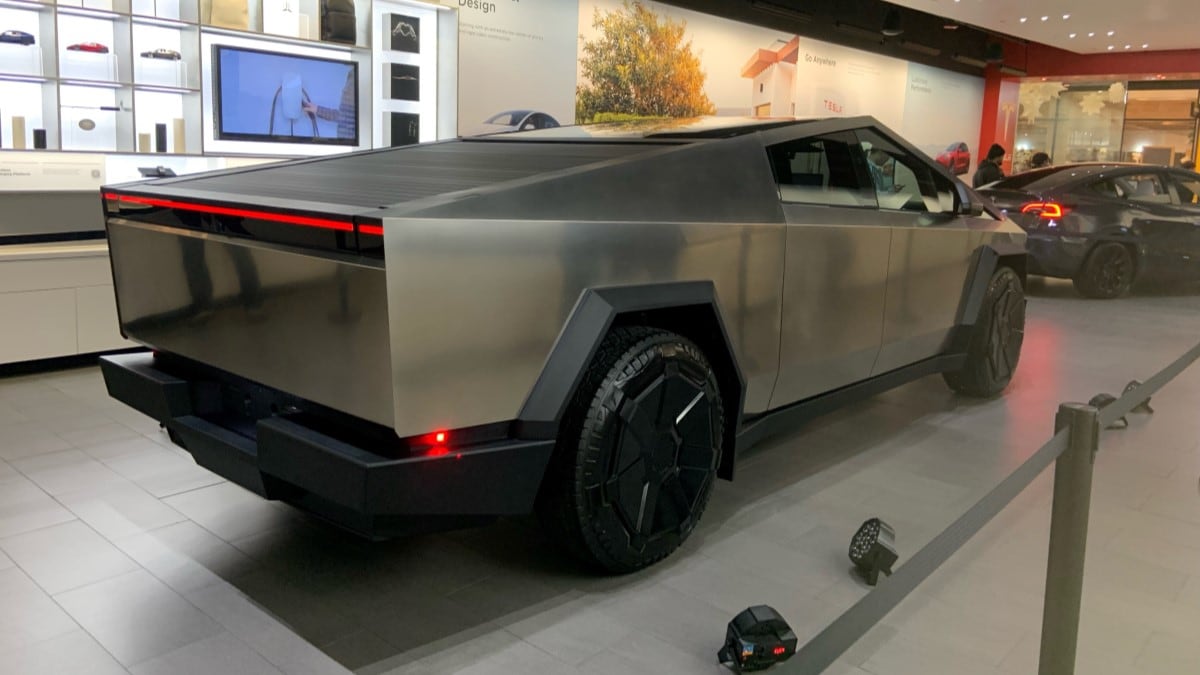
There’s Cold Business Logic Here
Musk is candid that the Cybertruck, with all its novel production methods, is incredibly expensive to build. Tesla likely can’t sell enough trucks to pay for building the Cybertruck.
Musk has said the company hopes to build 250,000 a year (so 2 million reservations is an 8-year-long line at best) but won’t get there for some time. The company, notoriously tight-lipped with the media, will likely lose money building the model for years to come.
That’s an old auto industry model that has been key to success for many automakers. So-called “halo cars” pull buyers into the showroom to gawk, where salespeople people can steer them to something more profitable.
So whether the Cybertruck succeeds may have little to do with zero-to-60 times and payload capacities. It may have little to do with Cybertruck sales.
Tesla controlled 75% of the EV market in the United States in the second quarter of last year. By the third quarter of 2023, its market share had fallen below 50%. With more competitors entering the market daily, it feeds off a shrinking piece of a growing pie.
The Cybertruck – rare and brutally expensive to build – will likely never reach the sales volume that fixes that problem. However, it could generate enough hype to attract more buyers to the brand’s other cars.
Publicity like the Cybertruck generates could be worth a lot to the company – if it sells enough Model Y EVs to make the cost of Cybertruck production worthwhile.
